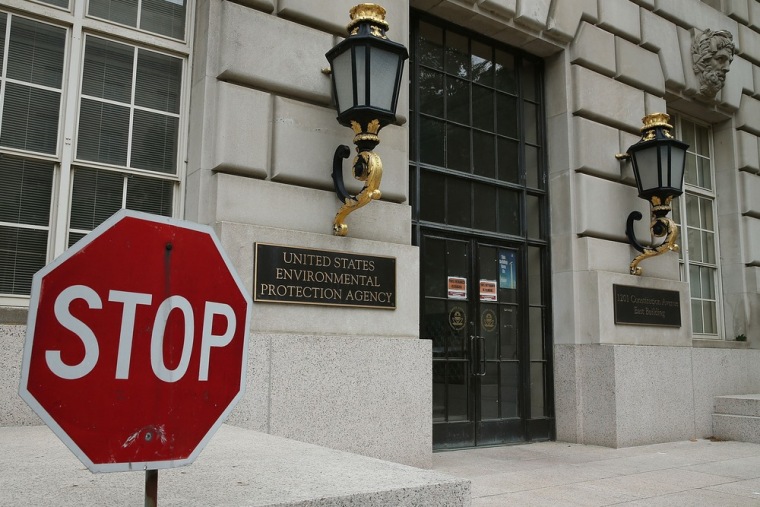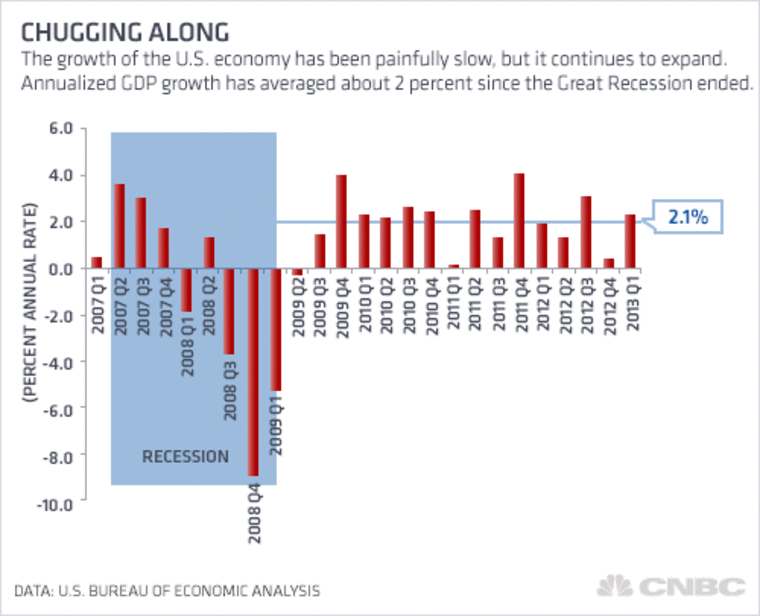
Like a steam engine leaving the station, the American economy is gathering momentum. The wheels are turning, the engine is pumping and the engineers have opened the throttle full bore. If only Washington would get out of the way.
The U.S. economy expanded at a 2.4 percent annual rate during the first quarter, down a tenth of a point from an initial estimate, according to revised figures from the Commerce Department released on Thursday. Economists had forecast a 2.5 percent gain, the initial reading reported by the government last month.
The report follows a string of economic data – from rising home prices to improved consumer confidence - offering more evidence that the economy continues to repair the widespread damage inflicted by the 2008 financial collapse.
But the headwinds from federal spending cuts are expected to blow harder later this year. That could test the underlying strength in spending by consumers and businesses that is offsetting the drag from cuts in government spending, which accounts for roughly 20 cents of every dollar of GDP.
“We've seen some false dawns in this recovery before - times where it looked like the economy was ready to step it up, and then it kind of petered out,” said Joshua Feinman, chief global economist with Deutsche Asset and Wealth Management.
Government belt-tightening started five years ago as a sharp drop in both property and income taxes forced state and local government to slash budgets, pare services and lay off workers. A massive federal stimulus package helped blunt some of the pain, but those funds have largely dried up.
Now, as state budgets are stabilizing, an $85 billion federal budget-balancing package of tax hikes and spending cuts is taking another bite out of gross domestic product.
“The ongoing fiscal contraction is now the biggest obstacle holding back the recovery,” said economists at Capital Economics in a note to clients this week.

Investors, Fed policy makers and business managers are watching closely to see if the shrinkage in federal spending cuts more deeply into the economy later this year. The five percent across-the-board reduction known as the sequester officially took effect in March. But the impact may lag into the summer and early fall because of delays in implementing the cuts by government agencies.
As Uncle Sam has cut back, other sectors of the economy have taken up the slack. Consumers, who account for 70 cents of every GDP dollar, are feeling much better about their financial well-being.
Some have seen their wealth buoyed by rising stock prices. Others are benefiting from the surge in home prices, which have risen 10 percent in the past 12 months. Though wages remain stagnant and this year's payroll tax hike is taking a bigger bite, falling gas prices and very low inflation are helping households make ends meet. Lower interest rates are helping them carry mortgage and credit card debt more easily.
The revival of the housing market is also spurring a new wave of home building, which helps boost spending on everything from appliances to landscaping. But the contribution from that corner of the economy is relatively limited: residential investment made up only 2.7 percent of GDP in the first quarter, down from 6.1 percent in 2005.
Businesses continue to invest in new equipment at a healthy pace, even as they remain slow to hire more workers until the economy shows more convincing signs of recovery.
The result of that hiring reluctance is a stubbornly high jobless rate that, five years into the recovery, remains one of the biggest forces holding it back. Though the job market has been improving gradually for the last two years, some 11.7 million Americans were still without a paycheck in April. Roughly a third of them have been out of work for a year or more, double the level seen in any recession since World War II.
“It's not that the economy isn't generating enough jobs. It is,” said Feinman. ”It's just that we lost so many jobs in '08-'09 - we created such a deep crater - that even with the pace of decent job growth that we've been having recently, it's just going to take a long time to repair that damage.”
So far, much of that repair job has fallen to the Fed, whose unprecedented, massive money manufacturing effort has pumped more than $3 trillion in the system to help fill in the hole created by the 2008 collapse of the housing market and financial system.
At some point, the Fed will decide the economy has recovered well enough to shut off the money pumps. That’s why, ironically, recent strength in the economic data has spooked investors. They're afraid that when the Fed turns off its money machine, the resulting rise in interest rates could create yet another headwind to growth.